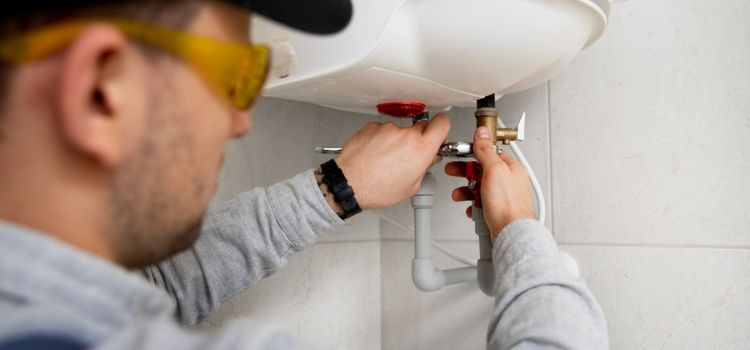First, flush and clean a water heater, and turn off the heat and cold water supply. Then, connect a drain hose, open the drain valve, and flush in bursts until the water runs clear.
A water heater needs regular maintenance to remove sediment buildup, ensuring optimal performance and longevity. A buildup of sediment may result in less effective heating and even damage the tank. Flushing and cleaning the water heater is a simple yet crucial maintenance task for homeowners to keep their water heaters in top condition.
This procedure entails emptying the tank in order to eliminate sediment and mineral deposits, improving the heater’s efficiency and extending its lifespan. Regular maintenance ensures a consistent hot water supply and helps prevent costly repairs or premature water heater replacement.
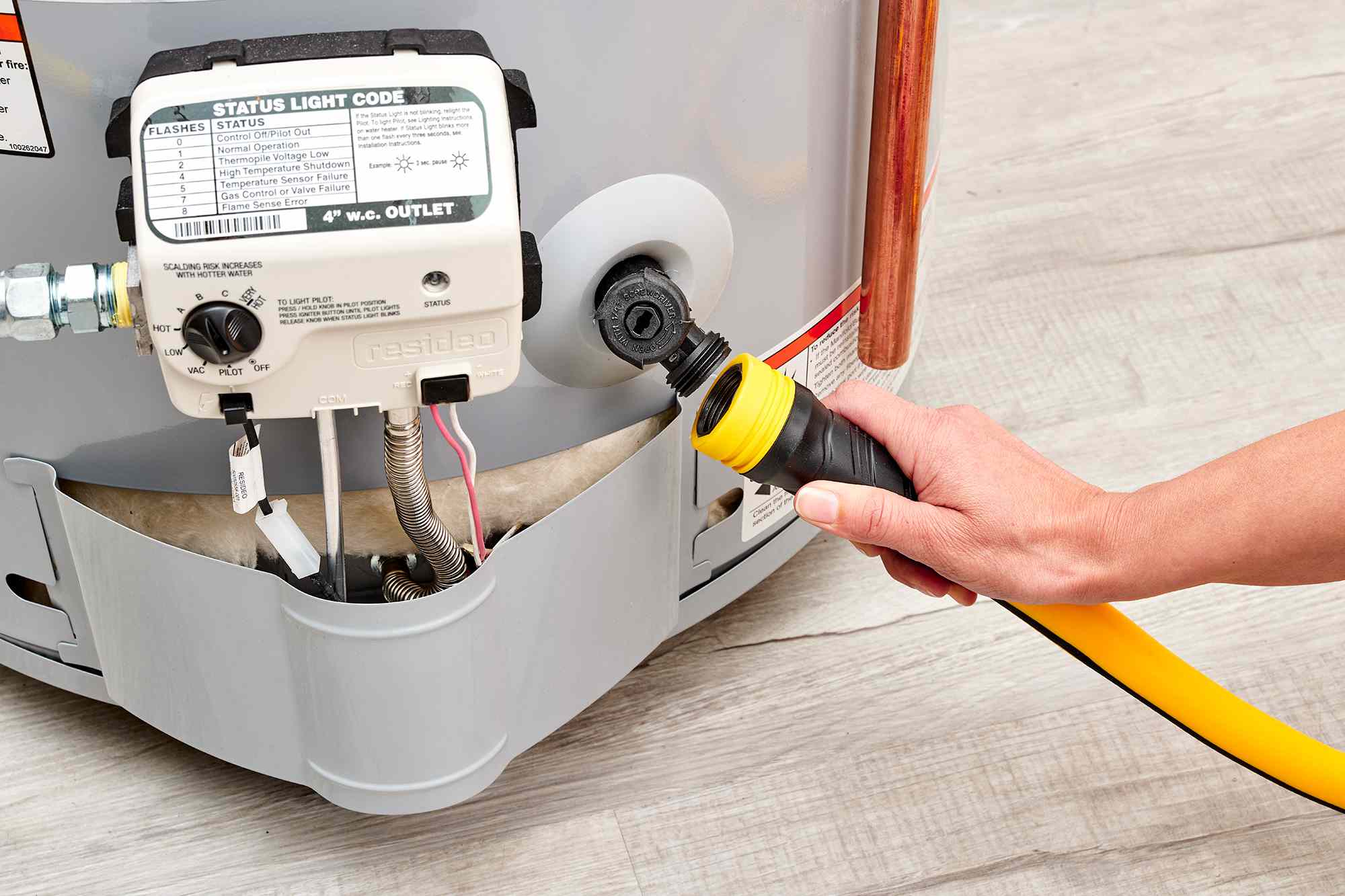
Credit: www.indeepplumbing.com.au
By following these instructions on how to flush and clean a water heater, you can maintain your system and extend its lifespan. Let’s dive into the process of flushing and cleaning your water heater to keep it running smoothly.
What Are The Benefits Of Flushing And Cleaning A Water Heater?
Flushing and cleaning your water heater can improve efficiency and prolong its lifespan. Removing sediment buildup can ensure optimal heating performance and minimize energy waste. Regular maintenance like this can also prevent costly repairs in the future.
Extends The Lifespan Of The Water Heater
Regular flushing and cleaning extend the water heater’s lifespan by preventing sediment buildup.
Improves Water Quality
Flushing and cleaning improve water quality by removing accumulated debris and sediments.
Saves Energy And Money
Regular maintenance saves energy and money by ensuring the water heater operates efficiently.
Reduced Risk Of Malfunctions And Breakdowns
Flushing and cleaning reduce the risk of malfunctions and breakdowns by maintaining optimal performance.
What Are The Signs That Your Water Heater Needs Flush And Clean
If your water heater shows any of the following signs, it may be time to flush and clean it to maintain its efficiency and prolong its lifespan.
Decreased Hot Water Supply
If you notice a decrease in hot water availability, it could indicate sediment buildup in the tank, making it more difficult for the water heater to heat the water.
Discolored Or Smelly Water
Discoloured or foul-smelling water from your taps can be a sign of rust or bacteria buildup inside the water heater, requiring immediate attention.
Reduced Water Flow
When the water flow is reduced, it may indicate mineral deposits clogging the pipes or the water heater itself, affecting the overall water pressure in your home.
Strange Noises Coming From The Water Heater
Unusual noises, such as popping, banging, or rumbling, coming from the water heater can be a sign of sediment or mineral buildup, which can cause the unit to overheat and work inefficiently.
Increased Energy Bills
Unexpectedly high energy costs without a shift in consumption could be attributed to a less efficient sediment buildup is causing the water heater to struggle to heat the water.
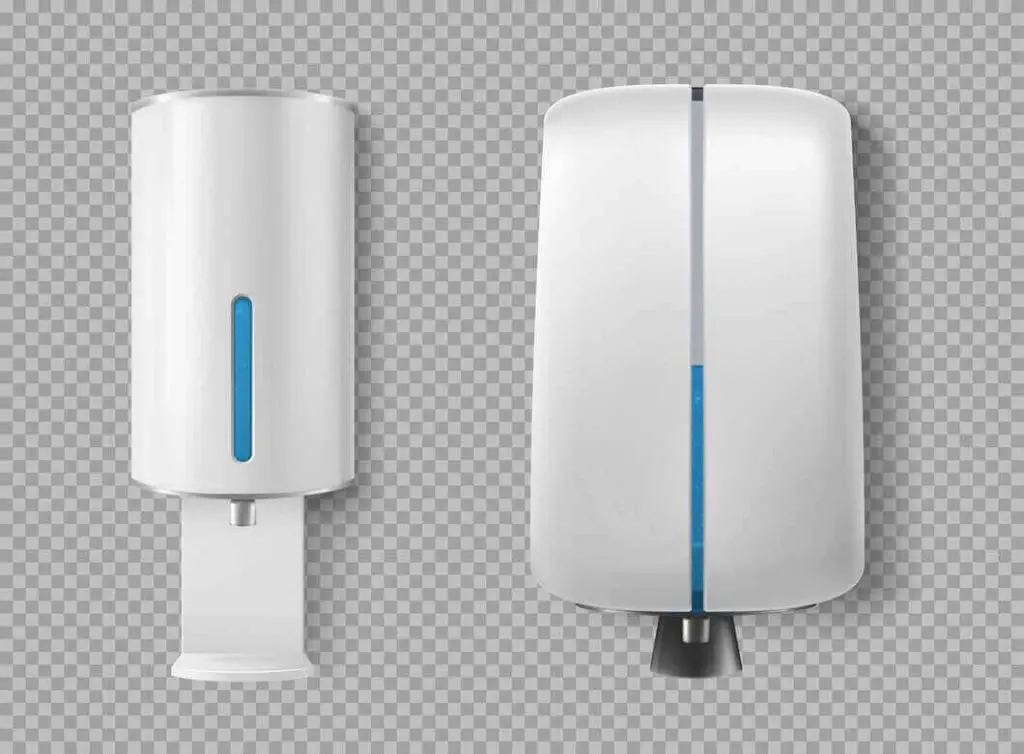
Credit: www.freepik.com
What Are The Tools And Materials Needed To Flush A Water Heater?
A garden hose is essential for flushing a water heater as it allows you to easily drain out the sediment and build up.
A bucket will be handy for collecting the water and sediment that comes out during the flushing process, preventing any mess.
A screwdriver is needed to access and open the water heater’s drain valve for effective flushing.
Using vinegar or a descaling solution helps to break down mineral deposits inside the water heater, ensuring a thorough clean.
What Are The Steps To Flushing And Cleaning A Water Heater?
Learn how to flush and clean a water heater by following these steps:
- Turn Off The Power And Water Supply
- Drain The Water Heater
- Clean The Inside Of The Water Heater
- Refill And Restart The Water Heater
Regular flushing and cleaning can assist keep sediment from building up and increase the water heater’s lifespan.
1. Turn Off The Power And Water Supply
Before starting the flushing and cleaning process, turning off the power supply to the water heater is crucial. To avoid electrical mishaps, find the circuit breaker or fuse that controls the heater and turn it off. Additionally, turn off the water supply valve to stop water flow into the heater.
2. Drain The Water Heater
The drain valve should then be connected to a garden hose at the water heater’s bottom. Place the other end of the hose in an appropriate drainage spot, such the ground or an outdoor drain. Allow air to enter the system by opening the pressure relief valve, then open the drain valve to start draining the water from the heater.
3. Clean The Inside Of The Water Heater
Once the water heater is drained, inspect the drained water for sediment and debris. If necessary, flush the water heater’s inside in short bursts to dislodge any remaining sediment. After flushing, inspect the water again to ensure it runs clear, indicating that the heater is free from sediment buildup.
4. Refill And Restart The Water Heater
After cleaning the inside of the water heater:
- Once the drain valve is closed, unplug the hose.
- Turn on the water supply valve to refill the heater with water.
- Once the heater is filled, turn the power supply back on and restart the water heater; before using it, let it get to the appropriate temperature.

Credit: www.artofmanliness.com
Safety Precautions During The Flushing Process
When flushing and cleaning a water heater, To prevent any mishaps, safety must come first or injuries. By taking these safety measures, you can make sure a smooth and secure flushing process.
Wear Protective Gear
Before initiating the flushing process, wearing appropriate protective gear such as gloves, safety goggles, and closed-toe shoes is essential. This safety equipment will help protect you from any burns, cuts, or hot water splashes or debris.
Avoiding Electrical Hazards
Ensure to turn off the power supply to the water heater before commencing the flushing process. This precaution mitigates the risk of electrical shocks or short circuits. Additionally, be cautious of any exposed electrical components near the water heater.
Be Careful Of Hot Water And Steam
During the flushing process, be mindful of hot water and steam escaping from the water heater. Maintain a safe distance from the water heater and avoid direct contact with the draining water to prevent burns or scalding.
Follow the Manufacturer’s Instructions
Adhere to the manufacturer’s instructions for your specific water heater model. Each water heater may have unique flushing requirements, and following the manufacturer’s guidelines ensures a safe and effective flushing process.
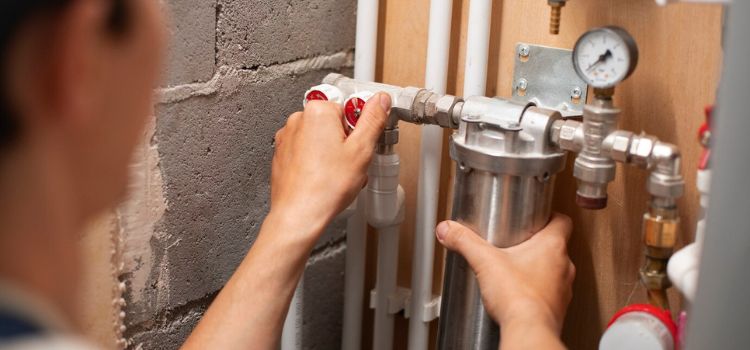
Credit: www.freepik.com
How Often Should You Flush And Clean Your Water Heater?
Regularly flushing and cleaning your to keep your water heater operating efficiently and prolong its life, you need. Cleaning and flushing Your water heater will function at its best and save energy if you clean it at least once a year to remove sediment buildup and prevent corrosion.
Maintaining your hot water quality and averting future problems may both be accomplished with routine maintenance.
Annual Flushing
Flustering and cleaning your water heater at least once a year is recommended to maintain its efficiency and prolong its lifespan.
Tank-type Water Heaters
For tank-type water heaters, annual flushing is crucial to keep performance at its best and avoid sediment accumulation.
Tankless Water Heaters
While tankless water heaters require less maintenance, it is still essential to flush them annually to remove any mineral deposits affecting their efficiency.
Signs That It’s Time To Flush
- Discolored or foul-smelling water
- Decreased hot water supply
- Noisy operation
- Visible sediment in the water
Maintenance Tips After Flushing
After flushing and cleaning a water heater, its following maintenance tips is essential to ensure its optimal performance. Regularly check for sediment buildup and flush the heater to remove it. Inspect the anode rod and temperature pressure relief valve for any issues.
Keep the heater well-maintained to extend its lifespan and ensure efficient heating.
Adjusting Temperature Settings
After flushing your water heater, it’s essential to assure the temperature parameters are correctly set. To prevent scalding, the water temperature should be set between 120 and 125 degrees Fahrenheit. This is also an optimal temperature for maintaining energy efficiency and controlling the growth of harmful bacteria in the tank.
Regular Inspection For Signs Of Corrosion
Checking your water heater frequently for indications of corrosion is crucial for its longevity and safety. Look for rusty spots, water leaks, or damp areas around the tank. These can indicate corrosion and potential leaks. Addressing corrosion early can prevent significant damage to the water heater and the surrounding area.
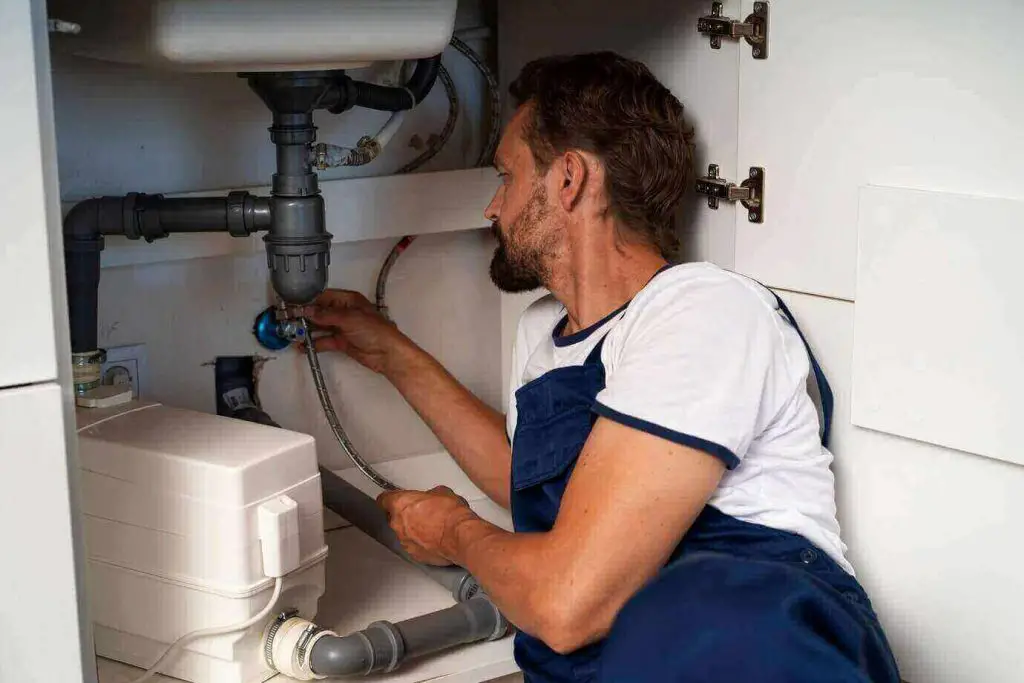
Credit: www.freepik.com
Professional Help And When To Call A Plumber
Complex issues with water heaters may include leaks, strange noises, or inconsistent heating.
Early detection of these issues can stop more harm.
Experienced plumbers have the expertise to interpret and fix complex water heater issues.
Calling a plumber when you encounter persistent problems is essential to ensure proper repair.
Conclusion
Maintaining a water heater on a regular basis is essential to guarantee its longevity and efficiency. If you follow the correct procedures, cleaning and flushing your water heater should be a simple process. This will help you eliminate the sediment buildup and ensure the smooth functioning of your water heater.
With the help of the tips and guidelines mentioned, you can easily flush and clean your water heater without any professional help. So, follow these steps and keep your water heater in top condition.
Frequently Asked Questions On How to Flush And Clean a Water Heater: Easy DIY Guide
Can I Flush My Water Heater Myself?
Yes, you can do a DIY water heater flush. To do so, you’ll need to turn off the heat, turn off the cold water supply, connect a drain hose, allow air into the system, open the drain valve, inspect the draining water, flush in bursts, inspect the water again, completely fill and drain once more, and perform final steps.
Regular flushing can prevent sediment buildup and extend the life of your water heater.
How To Dissolve Sediment In A Water Heater?
To dissolve sediment in a water heater, flush it by connecting a drain hose, opening the valve, and draining the water.
How Do You Remove Buildup From A Water Heater?
To remove buildup from a water heater, flush it by turning off heat and cold water, connecting a drain hose, opening the drain valve, and flushing in bursts. Inspect the water, fill it, and drain it, and repeat this for a clean system.
Regular maintenance prevents sediment buildup.
How Do I Know If My Water Heater Needs To Be Flushed?
If your water heater has no hot water, it may need flushing to remove sediment buildup.
As an Amazon Associate, I earn from qualifying purchases

